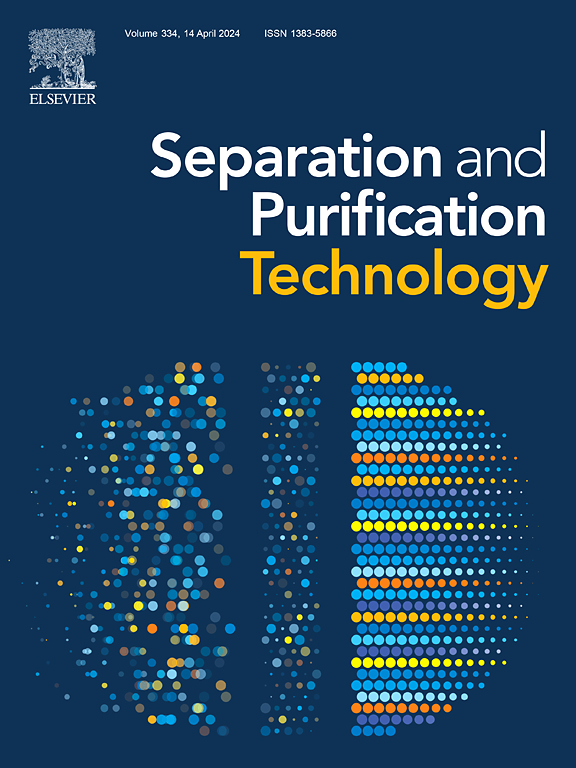Catalytic carbon dioxide absorption and stripping using nanofibrous membrane contactors
IF 8.1
1区 工程技术
Q1 ENGINEERING, CHEMICAL
引用次数: 0
Abstract
Catalyst-assisted CO2 capture processes are developed using membrane gas-solvent contactors. While chemical absorption-based capture methods are among the most practical for CO2 capture, they are generally regarded as energy-intensive, particularly for the regeneration of CO2-rich solvents. Herein, we propose catalytic membrane-based CO2 absorption and desorption processes which significantly lower the solvent regeneration temperature and offer additional CO2 sorption sites within mesoporous MCM-41 based catalysts. The incorporation of membrane gas-solvent contactors with hydrophobic polymer nanofibres enhances CO2 transfer by creating a larger mass transfer area. The resulting catalytic CO2 capture process, incorporating 1.0 wt% of SO42-/MCM-41 nanocatalysts in 5 M monoethanolamine (MEA) solution and Thermally Rearranged polymer (TR-PBOI) nanofibre membranes, demonstrates 23.5mmol m−2 s−1 of CO2 absorption flux at 50 °C and 32.6mmol m−2 s−1 of CO2 desorption flux at 90 °C, presenting a catalytic enhancement of 150 %.

求助全文
约1分钟内获得全文
求助全文
来源期刊

Separation and Purification Technology
工程技术-工程:化工
CiteScore
14.00
自引率
12.80%
发文量
2347
审稿时长
43 days
期刊介绍:
Separation and Purification Technology is a premier journal committed to sharing innovative methods for separation and purification in chemical and environmental engineering, encompassing both homogeneous solutions and heterogeneous mixtures. Our scope includes the separation and/or purification of liquids, vapors, and gases, as well as carbon capture and separation techniques. However, it's important to note that methods solely intended for analytical purposes are not within the scope of the journal. Additionally, disciplines such as soil science, polymer science, and metallurgy fall outside the purview of Separation and Purification Technology. Join us in advancing the field of separation and purification methods for sustainable solutions in chemical and environmental engineering.
 求助内容:
求助内容: 应助结果提醒方式:
应助结果提醒方式:


